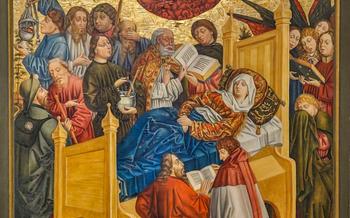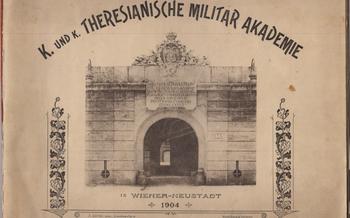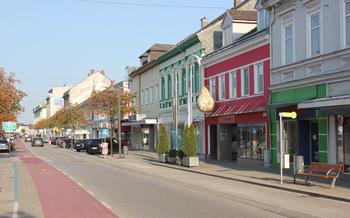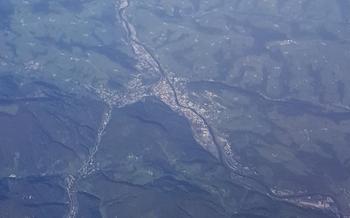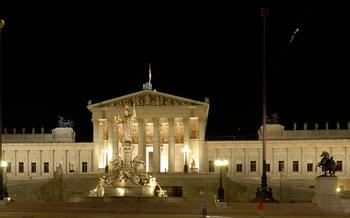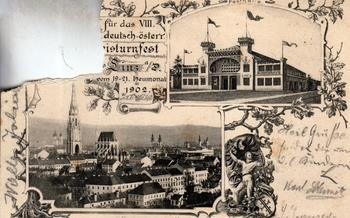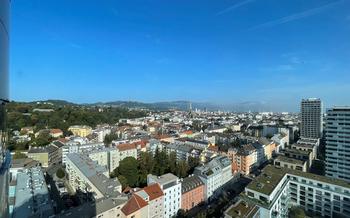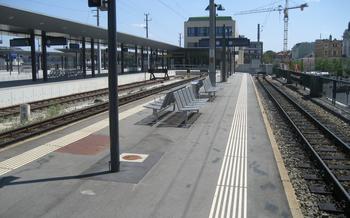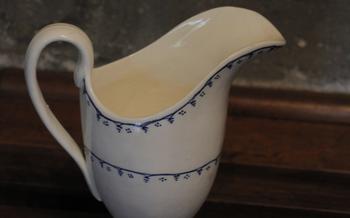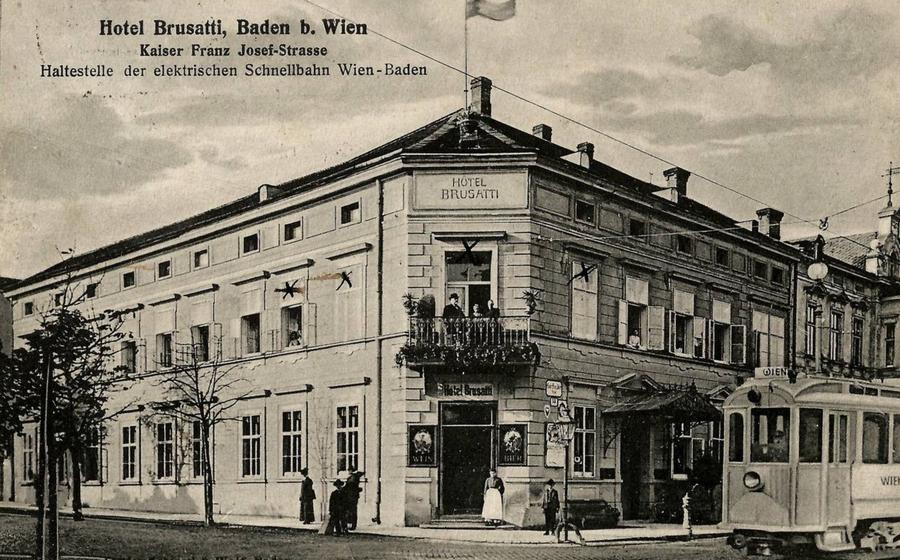
Burg Seebenstein
- History and Antiquity
- Renaissance and Baroque
- 19th Century and Beyond
- Exploring the Castle Grounds
- Knights' Hall and Great Hall
- Chapel and Casemates
- Museum and Exhibitions
- Events and Festivals
- Surrounding Area and Activities
- Accessibility and Getting There
- Opening Hours and Admission
- Photography and Filming
- Accessibility for Visitors with Disabilities
- Insider Tip: Unraveling the Secrets of Burg Seebenstein
History and Antiquity
Nestled amidst the picturesque landscapes of Lower Austria, Burg Seebenstein stands as a testament to centuries of rich history. Originally constructed in the 12th century as a fortified outpost, the castle underwent several transformations over the years, reflecting the changing architectural styles and the tumultuous events that shaped its existence.
During its early days, Burg Seebenstein served as a strategic stronghold, guarding the borders of the Babenberg dynasty. Its imposing walls and towers provided refuge during times of conflict, while its location overlooking the surrounding countryside allowed for effective surveillance and defense.
As the centuries passed, the castle experienced a series of ownership changes, each leaving its own unique mark on the structure. In the 15th century, the castle underwent extensive renovations under the stewardship of the Lords of Puchheim, who added Gothic elements to its design. The 16th century brought about further embellishments with the addition of Renaissance-style features, creating a harmonious blend of architectural influences.
Renaissance and Baroque
During the Renaissance and Baroque periods, Burg Seebenstein underwent significant renovations and additions that transformed its appearance and character. The castle's fortifications were strengthened, and new residential buildings were constructed, reflecting the changing needs and tastes of the time. The Renaissance influence is evident in the castle's elegant arcades, decorative facades, and intricate stone carvings. The Baroque period brought further embellishments, including opulent stuccowork, grand staircases, and elaborate ceiling frescoes. These architectural features showcase the artistic and cultural trends of the era and add a touch of grandeur to the castle's overall aesthetic.
Notable figures associated with Burg Seebenstein during this time include the Counts of Hoyos, who acquired the castle in 1551 and initiated many of the Renaissance renovations. Under their patronage, the castle became a center of culture and learning, attracting artists, scholars, and musicians. The Counts of Hoyos also played a significant role in the region's politics and economy, leaving a lasting legacy on Burg Seebenstein and its surrounding area.
19th Century and Beyond
The 19th century brought significant changes to Burg Seebenstein. In 1806, it was acquired by the Esterházy family, who initiated extensive renovations and remodeling. The castle's defenses were strengthened, and new living quarters were constructed. During this period, Burg Seebenstein served as a hunting lodge and summer retreat for the Esterházy family.
In the 20th century, the castle faced turbulent times. During World War I, it was used as a military hospital. In World War II, it suffered damage from Allied bombings. After the war, the castle underwent restoration and reconstruction efforts.
Currently, Burg Seebenstein is privately owned by the Esterházy Foundation, which has invested in its preservation and development. The castle is open to the public and offers guided tours, exhibitions, and special events throughout the year.
Exploring the Castle Grounds
The extensive grounds of Burg Seebenstein offer a captivating blend of historical charm and natural beauty. As you wander through the castle's courtyards, you'll be greeted by enchanting gardens, serene ponds, and panoramic views that stretch for miles. Take advantage of the guided tours available, which provide insightful commentary on the castle's history and architectural highlights. Alternatively, embark on a self-guided exploration, allowing you to discover hidden corners and capture stunning photographs at your own pace.
Don't miss the opportunity to climb the castle tower, where breathtaking vistas await. From this vantage point, you'll witness the surrounding countryside in all its glory, with rolling hills, vineyards, and forests painting a picturesque landscape. For those seeking a unique perspective, explore the castle's underground passages and secret chambers, offering a glimpse into the hidden world beneath Burg Seebenstein.
Knights' Hall and Great Hall
The Knights' Hall, also known as the Rittersaal, is a remarkable architectural feature of Burg Seebenstein, steeped in historical significance. Originally constructed in the 13th century, this grand hall served as a gathering place for knights and noblemen, hosting feasts, celebrations, and important meetings. Its impressive vaulted ceiling, supported by massive pillars, creates a sense of awe and grandeur.
The hall showcases a collection of medieval weaponry, including swords, armor, and other artifacts, providing insights into the castle's defense mechanisms and the lives of its former inhabitants. Visitors can marvel at the intricate details of the armor suits, each piece meticulously crafted to provide protection during battles.
Adjacent to the Knights' Hall is the Great Hall, a testament to the castle's opulence and grandeur. With its expansive dimensions and soaring ceiling, this hall was used for grand events, banquets, and celebrations. Its walls are adorned with vibrant frescoes and tapestries, depicting scenes from history, mythology, and the daily life of the castle's occupants.
Today, the Knights' Hall and the Great Hall are open to the public as part of the castle's guided tours, offering visitors a glimpse into the grandeur and rich history of Burg Seebenstein. Whether you're fascinated by medieval history or simply appreciate stunning architecture, these halls are not to be missed.
Chapel and Casemates
Within the castle's walls lies a sacred space, the castle chapel, adorned with intricate frescoes and stained glass windows that cast a warm glow upon the interior. Its serene atmosphere invites reflection and contemplation, transporting visitors back in time to an era of deep religious devotion.
Descending beneath the castle grounds, visitors can explore the enigmatic casemates, a network of underground tunnels and chambers that once served as a refuge during times of siege. The cool, damp air carries whispers of history, as the walls bear witness to the castle's resilience and the resourcefulness of its inhabitants. Excavations have unearthed a treasure trove of artifacts, providing glimpses into the daily lives of those who sought shelter within these hidden depths.
Museum and Exhibitions
Burg Seebenstein houses a fascinating museum that delves into the castle's rich history and significance. The exhibits showcase a diverse collection of artifacts, documents, and interactive displays that bring the past to life. Visitors can explore the various rooms and halls, each dedicated to a specific theme or era.
One highlight of the museum is the Knights' Hall, which features an impressive display of medieval weaponry and armor. Here, visitors can learn about the castle's defense mechanisms and the role of knights in protecting the realm. Another must-see exhibit is the Great Hall, which showcases the castle's grandeur and its use for grand events and celebrations.
The museum also hosts thematic exhibitions and special displays throughout the year. These exhibitions focus on specific aspects of the castle's history, such as its role in wartime, its architectural evolution, or the lives of its former inhabitants. Interactive elements and educational experiences make the museum a great place for visitors of all ages to learn and engage with the castle's rich heritage.
Events and Festivals
Burg Seebenstein comes alive with a vibrant calendar of events and festivals throughout the year, offering visitors a chance to immerse themselves in the castle's rich history and traditions. One of the highlights is the annual Medieval Market, held in July, which transports visitors back in time with its authentic stalls, live music, and demonstrations of medieval crafts and skills.
Another popular event is the Knight's Tournament, held in August, where brave knights clad in armor engage in thrilling jousting competitions and sword fights, showcasing their prowess and courage. For a more cultural experience, the Seebenstein Summer Concerts feature performances by renowned musicians in the stunning acoustics of the castle's courtyard.
During the festive season, Burg Seebenstein hosts the Christmas Market, a magical event filled with enchanting lights, festive decorations, and the irresistible aromas of traditional Austrian treats. Visitors can browse unique handmade gifts, indulge in delicious local cuisine, and enjoy the heartwarming atmosphere of the castle during the holidays.
Surrounding Area and Activities
Beyond the enchanting walls of Burg Seebenstein, the surrounding region beckons with a wealth of attractions and activities. Nature enthusiasts can embark on invigorating hikes or leisurely bike rides through the picturesque landscapes, immersing themselves in the tranquility and beauty of the Austrian countryside. The nearby town of Seebenstein offers a charming blend of history and modernity, with its narrow cobblestone streets, inviting cafes, and boutique shops.
For those seeking a culinary adventure, the region boasts a diverse range of restaurants and taverns, serving up mouthwatering local delicacies and traditional Austrian fare. Indulge in hearty dishes made with fresh, seasonal ingredients, accompanied by a glass of the region's renowned wines. Whether you prefer fine dining experiences or cozy family-run establishments, the surrounding area offers something to satisfy every palate.
Accessibility and Getting There
Reaching Burg Seebenstein is a breeze thanks to its convenient location and accessible transportation options. Multiple buses ply the route from Wiener Neustadt and Baden bei Wien, dropping passengers right at the castle's doorstep. For those who prefer to drive, ample parking spaces are available, ensuring a hassle-free visit.
Whether you're planning a day trip or a longer stay, Burg Seebenstein welcomes visitors with open arms. If you're short on time, a day trip is a great way to soak in the castle's medieval charm and explore its main attractions. However, if you have the luxury of more time, consider spending a night or two in the nearby towns of Seebenstein or Bad Fischau. This will allow you to savor the tranquility of the castle grounds, immerse yourself in the local culture, and perhaps even catch one of the many events or festivals held throughout the year.
To make the most of your visit, it's advisable to plan your itinerary in advance. Check the castle's website or contact the tourist information office for up-to-date information on opening hours, guided tours, and special events. This way, you can tailor your visit to your interests and make the most of your time at Burg Seebenstein.
Opening Hours and Admission
Visiting Hours: - Burg Seebenstein welcomes visitors from March to November, offering guided tours and self-guided exploration opportunities. - During the winter months (December to February), the castle is generally closed for renovations and maintenance. - Check the official website or contact the castle management for the most up-to-date information on opening hours.
Admission Fees: - Standard admission tickets provide access to the castle grounds, guided tours, and the museum exhibits. - Discounted rates are available for children, students, seniors, and groups. - Special event tickets or packages may apply for festivals, markets, or themed exhibitions.
Advance Booking: - Advance booking is highly recommended, especially for guided tours and special events. - Online booking options are available, or you can call the castle directly to reserve your spot. - Booking in advance ensures a smoother and more organized visit, avoiding long queues during peak season.
Best Time to Visit: - Spring and autumn (April-May and September-October) offer pleasant weather and fewer crowds, allowing for a more relaxed and enjoyable visit. - Summer months (June-August) are busier but provide longer daylight hours for exploring the castle grounds. - Winter visits offer a unique charm and tranquility, but some areas may be closed due to weather conditions.
Photography and Filming
Photography and filming are permitted within the castle grounds, offering visitors the chance to capture the beauty and grandeur of Burg Seebenstein. To ensure a respectful and enjoyable experience for all, please adhere to the following guidelines:
-
Respect the Privacy of Others: Avoid taking photos or videos of other visitors without their consent, especially in private areas or during events.
-
Capture the Essence: Focus on capturing the architectural details, historical artifacts, and scenic views that make Burg Seebenstein unique.
-
Use Natural Light: Take advantage of the natural light to create stunning images. Avoid using flash as it may disturb other visitors or damage sensitive artifacts.
-
Tripods and Equipment: Tripods and other photography equipment are generally allowed, but please be mindful of the flow of visitors and avoid obstructing pathways.
-
Professional Photography and Videography: Professional photographers and videographers seeking to conduct commercial shoots should obtain prior permission from the castle management.
-
Share Your Experience: Share your photos and videos on social media using relevant hashtags and tagging the castle's official accounts.
-
Preserve the Legacy: Your photographs and videos help preserve the legacy of Burg Seebenstein. Share them with friends and family, and consider submitting them to historical archives or online platforms dedicated to heritage preservation.
Accessibility for Visitors with Disabilities
Burg Seebenstein is committed to providing an accessible and inclusive experience for all visitors, including those with disabilities. The castle grounds and facilities are designed to ensure that everyone can enjoy the rich history and cultural heritage of this iconic landmark.
Visitors with disabilities are welcomed with open arms and provided various accessibility features and assistance to ensure a seamless and enjoyable visit. Wheelchair ramps, elevators, and accessible restrooms are available throughout the castle, allowing visitors to navigate the premises with ease.
For those who require additional support, the castle staff is happy to provide assistance. Visitors can request assistance with parking, directions, and access to exhibits and attractions. The staff is trained to be accommodating and respectful, ensuring that all visitors feel welcome and included.
To ensure a smooth and enjoyable visit, visitors with disabilities are encouraged to contact the castle in advance to inquire about any specific needs or accommodations. The staff will be more than happy to assist in planning a personalized visit that caters to individual requirements.
By prioritizing accessibility, Burg Seebenstein creates an inclusive environment where everyone can immerse themselves in the castle's fascinating history and appreciate its architectural beauty, regardless of their abilities.
Insider Tip: Unraveling the Secrets of Burg Seebenstein
Beyond the main attractions, Burg Seebenstein holds secret spots and hidden gems waiting to be discovered by curious explorers. Seek out the secluded Renaissance Garden, nestled amidst the castle walls, where you can find tranquility and admire the exquisite blooms. For a unique perspective, climb the spiral staircase to the top of the keep, where panoramic views of the surrounding countryside await.
If you're a history buff, delve into the castle's archives, where ancient documents and artifacts provide a glimpse into the lives of its former inhabitants. For an unforgettable experience, book a stay at the castle's guesthouse, where you can immerse yourself in the ambiance of a bygone era.
Unleash your creativity and capture the essence of Burg Seebenstein through photography workshops organized by local artists. Learn to frame the castle's grandeur and capture its hidden details with your lens.
During the summer months, keep an ear out for the enchanting sounds of classical concerts held within the castle walls. These intimate performances offer a magical fusion of music and history.
Insider tip: For a truly unique experience, visit Burg Seebenstein during one of its medieval festivals. Immerse yourself in the sights, sounds, and flavors of a bygone era as you witness jousting tournaments, feast on traditional delicacies, and mingle with costumed performers.
